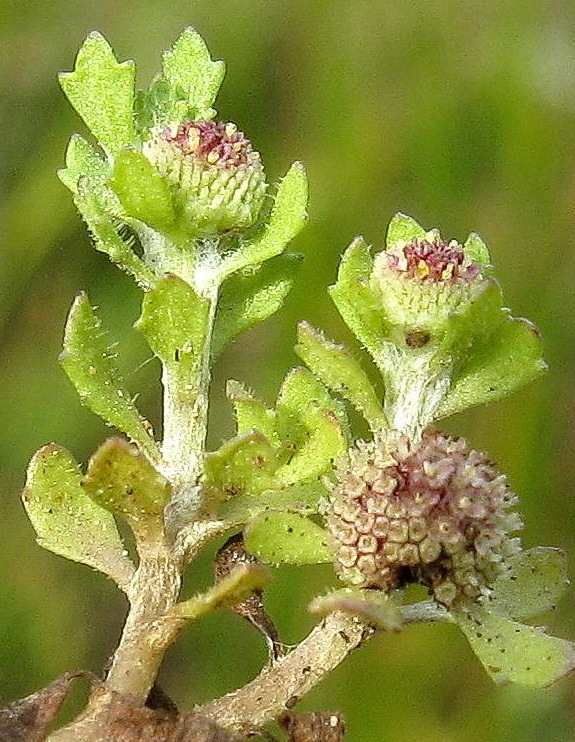Centipeda nidiformis
N.G.WalshDecumbent to ascending cottony annual, spreading to c. 15 cm diam. and/or 15 cm high, adventitious roots not or rarely produced; branches densely white-cottony at least on young growth. Leaves more or less spathulate, 3–10 mm long, 1–5 mm wide, usually with very slender petiole-like bases that are often almost as long as (occasionally longer than) the broader part of the lamina, shallowly (often obtusely) toothed or subentire; surfaces light to densely cottony, with (often indistinct) scattered resin droplets. Capitula more or less globular at anthesis, 2.5–5 mm diam., solitary, sessile; involucral bracts obovate with erose membranous margins, 1–1.6 mm long, usually densely cottony; receptacle depressed-hemispherical; female florets c. (50–)110–230, corollas 0.35–0.5 mm long; bisexual florets (6–)9–11, corollas 0.6–0.7 mm long. Fruiting heads readily disintegrating when mature on still-growing plants. Cypselas obcuneate, 0.8–1.1 mm long; ribs 4(–6), with short, subappressed hairs; intervening faces concave with 1 or 2 lines of vesicular trichomes; apex depressed-truncate. Flowers mostly Jan.–Apr.
MuM, Wim, VRiv, MSB, RobP, MuF, Gold, GGr, NIS. Also WA, NT, SA, Qld, NSW. Scattered throughout the Murray Basin and around the Grampians along the margins of watercourses on clay or clay-loam soils.
The leaves of Centipeda nidiformis are generally diagnostic, usually having relatively long, ‘pseudopetiolate’ bases, which distinguishes it from similar species such as C. minima. For relationships see C. pleiocephala.
 Spinning
Spinning



